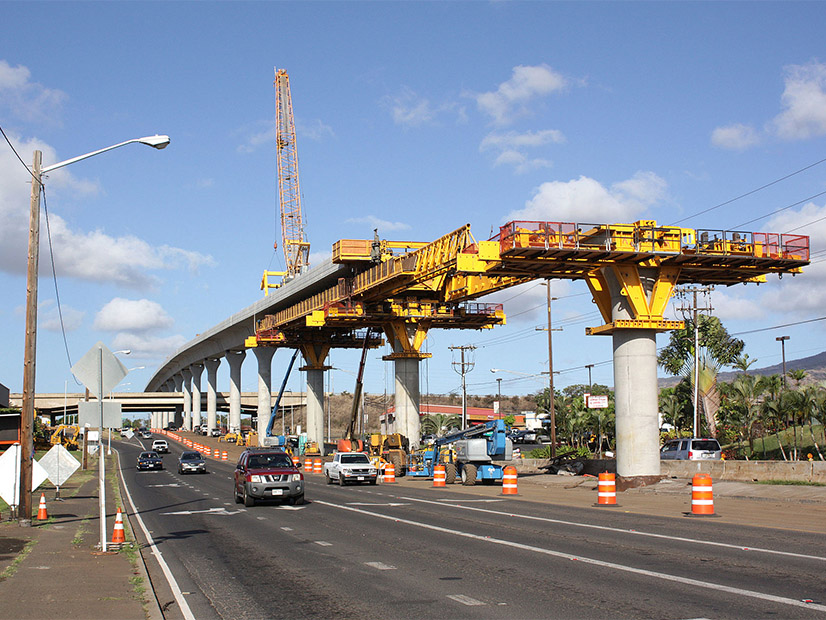
The Honolulu Authority for Rapid Transportation (HART) passed a resolution Friday recommending a new tax on tourists to help pay for a $3.5 billion budget shortfall in the city’s 21-mile light-rail project.
The request came two days after HART’s board of directors reviewed a permitted interaction group (PIG) report that explored the value of earmarking a portion of a newly proposed transient accommodation tax (TAT) for the project. Under Hawaii law related to public entities, a PIG is a subgroup of board members assigned to investigate a specific matter related to board business.
Aimed at the tourism industry, the proposed TAT would levy a 3% tax on any accommodation for stays of less than 180 days.
The report recommended that the rail receive one-third of TAT revenues for the first two years after implementation of the tax, and half of TAT revenues thereafter, which would provide a projected $440 million from fiscal years 2023 to 2031. Bill 40, which would enact the TAT, is awaiting its third reading by the Honolulu City Council.
The report also explored other cost-saving methods that could reduce the shortfall to about $2 billion. Triunity, a construction management consultancy approved by the Federal Transportation Administration, determined that HART could reduce the cost of the rail by $749 million. A change in construction plans to avoid relocating high voltage power lines would also save an estimated $150 million. Use of an unallocated contingency fund within HART’s budget could provide another $222 million.
The report also projected that a “much faster than anticipated” rebound in tourism could produce an additional $539 million from general excise tax revenue by 2030.
The HART project has been plagued with increased costs and budget shortfalls, a fact acknowledged in the report and board resolution. The latter noted that “requesting TAT funding from the Honolulu City Council only makes sense in the context of other measures which, combined, would allow us to complete the rail project. We cannot ask the public for more funding if they perceive that the money would only help extend the system another mile or two.”
The PIG report pointed to “many possible reasons,” for cost overruns, including “significant delays due to lawsuits, rising costs of materials, the pandemic, overly-optimistic cost projections, unanticipated utility relocation costs and operational variables, and leadership decisions.”
The rail project is part of the state’s push for 100% renewable energy by 2045. The trains will be electrically powered and therefore equipped to benefit from the aggressive renewable energy projects the state is building; they will also reduce dependency on imported energy. HART estimates that the rail will cut energy demand by 3%, the equivalent of 5.9 million gallons of gasoline. The rail is projected to take 40,000 cars off the road every day.

